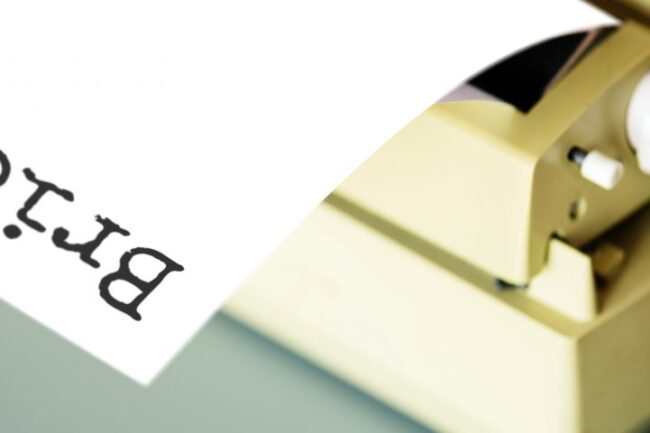Before the start of the operations, whether its the Production, Housekeeping, Engineering, or Food & Beverage Service department, it is very important that the entire team meets from 15 minutes to 30 minutes, depending on the kind of operation, (specialty dining rooms will need 30 minutes) to collectively discuss important aspects of successfully operating the ensuing shift. In 24-hour operations, this forum provides a systematic hand-over so that expectations or assurance from the previous shift can be followed up and executed smoothly.
Main Reasons for Having A Briefing:
I. Checking preparedness
II. Sharing of information
III. Motivating and disciplining
I. Checking Preparedness:
– Accessories such as click pen, black pocket comb, bottle opener, handkerchief, lighters, etc.
– Uniform, shoes, socks worn well.
– Personal grooming – hair, mustaches, nails, etc.
– Enough stock of drinks, menu cards, equipment etc.
– What is not available – drinks, food, tobacco.
– What substitutes is the chef providing.
– Reservations – look at guest history register, check likes, dislikes and share
– Memos communicating in-house developments. Changes in prices, new brands, testing new products, promotions. Even news that may be perceived as unpleasant by employees – has to be handled sensitively by the Manager.
– Mise-en-scene – Air Conditioning, bulbs, carpet, tables, chairs etc.
– Equipment – steam, coffee machines, etc.
II. Sharing of Information:
a) Knowledge
Of Product
– Items that take under 10 minutes to prepare and serve.
– Items that require over 30 minutes to prepare and serve.
– High cost fast moving items.
– Low cost fast moving items.
– Items that have ham, bacon, beef, onion, garlic.
– If item is not available, nearest alternative.
– Menu – description of each dish, course wise (each day – one section).
– Beverage – description of cocktails, popular brands, etc.
– Additional information, food trends.
Of Customer
– Name.
– Company affiliations.
– Personal preferences.
– Food and beverage preferences (vegetarian/non vegetarian).
– Seating preferences.
– Billing preferences.
– Music preferences.
– Any unhappy incident in the past, etc.(All accessible from the Guest History Register, alphabetically entered).
Of Systems
– Attendance register, ……………………………… submitting to HR office.
– Billing systems – connectivity between restaurant and restaurant cashier – Accounts – Customer’s Office/Bank.
– Bar inventory systems.
Control Procedures – Requisition and maintenance procedures.
– Uniform procedures, washing schedules etc.
Of Guest information
– VIPs in house.
– Events in other outlets, Exhibitions, Concerts.
– Attractive seasonal packages, if any.
– Phase wise renovation, if any.
– Which department does what guest – related activity.
Of General Information
– Events in the city, vicinity.
– Information that tourists might need of city, country etc.
– New employee joining the team, assign them to a supervisor, monitor learning and set deadlines.
b) To allocate tasks
– Assign closing and opening duties.
– Follow up on assignments already given such as:
Engineering related – Toasters, bottle coolers, Chillers
Housekeeping related – Chair upholstery, Spotting, Polishing
– Wobbling table legs, masonry
– Pest control, Linen supply
c) Collecting employee feedback
– Any grievance; poor quality or non-availability of food in the cafeteria.
– Uniforms coordinator delaying dispensing of uniforms.
– Loans applied for, not granted.
– Salaries wrongly deducted.
– Long leave not being granted.
– Locker rooms in dirty condition.
– Coordinating inter-departmental conflicts.
– Customer related feedback from employees.
d) Cost awareness information
– Sensitizing employees to the importance of savings.
– Listing high cost high turnover requisitions (menu jackets, menu inserts, stationery, etc.)
e) Sales related
Need for collecting visiting cards, guest history, recording it, sending it to Public Relations Department for exploring leads.
– Food and Beverage targets, establishing competitive advantages for exceeding targets.
– Slow moving items and how to push them, how to up-sell and sell with suggestions.
– Review of Customer feedback from feedback forms.
– Previous days KOTs – enter likes, dislikes into Guest History Register.

III Motivating and Disciplining
– As a platform for rewarding good performance, either in selling or extending extra-ordinary hospitality.
– Able to admonish or set standards for behavior to communicate disciplined working ways.
It is recommended that a representative from the kitchen as well as the kitchen stewarding take part in the service briefing in order to take ownership for all the backward and forward integrations required to delight the customer.
Daily Briefing and Inspection Checklist
Employee Inspection:
All employees should line up, for inspection. This inspection must include:
1. Uniform – Correct, complete clean. Well ironed.
2. Shoes – Clean, polished, well repaired, proper colour.
3. Socks – Appropriate colour, well repaired and freshly washed every day.
4. Hair – Clean, recently cut, well-groomed and neatly combed at all times not touching the ear or collar, not falling over the forehead.
5. Hands – Clean, washed, no sores or scabs. If a “Band-Aid” is being used, it should be changed before each shift.
6. Finger nails – Clean, paired.
7. Face – Clean-shaven, no sores or scars.
8. General – KOT pad, matches or lighter, ball pen (click type), bottle opener. Equipment
Other characteristics of grooming that the restaurant staff must check are:
Body odour
Bad breath
Any employee not confirming to the acceptable standards will be sent off the floor for the meal and is not paid for those hours.
Table inspection:
All tables set with clean linen, complete covers, everything clean, polished and properly placed.
Chairs dusted, side stations stacked and clean. Butter, water and ice prepared, ready for guest service.
Daily briefing:
The manager will review the following daily:
1. Du jour items and their standards and specifications.
2. Seasonal items on menu.
3. Review of general menu and standards. Special instructions regarding service, with one specific a la carte item discussed every day.
4. Review of general policies, rules and briefing of new policies.
5. Station assignments.
6. Likes and dislikes of regular guests.
7. Any other information.
8. The briefing shall also be utilized to bring employees suggestions pertaining to day-to-day work to the attention of the Manager.
“THE DIFFERENCE BETWEEN A “GOOD” AND A “BAD” RESTAURANT COULD BE “YOU”. YOU REPRESENT THE STANDARDS, IMAGE AND PROFESSIONALISM OF YOUR RESTAURANT. THOUSANDS OF RUPEES ARE SPENT TO CREATE BUSINESS, THOUSANDS FOR SKILLED COOKS, ATMOSPHERE AND MAINTENANCE -YET “YOU” ARE THE FINAL DECIDING POINT OF CONTACT.”
THE RESULTS DEPEND ON “YOU”


 Whatsapp:
Whatsapp: